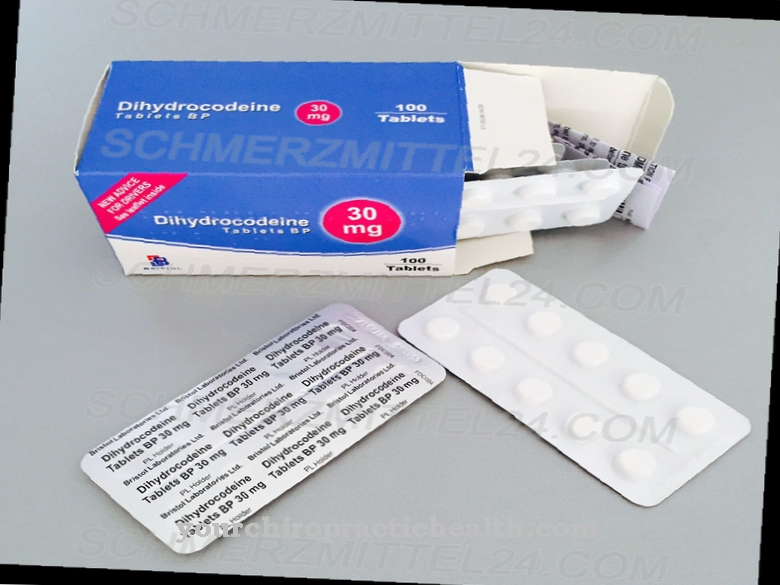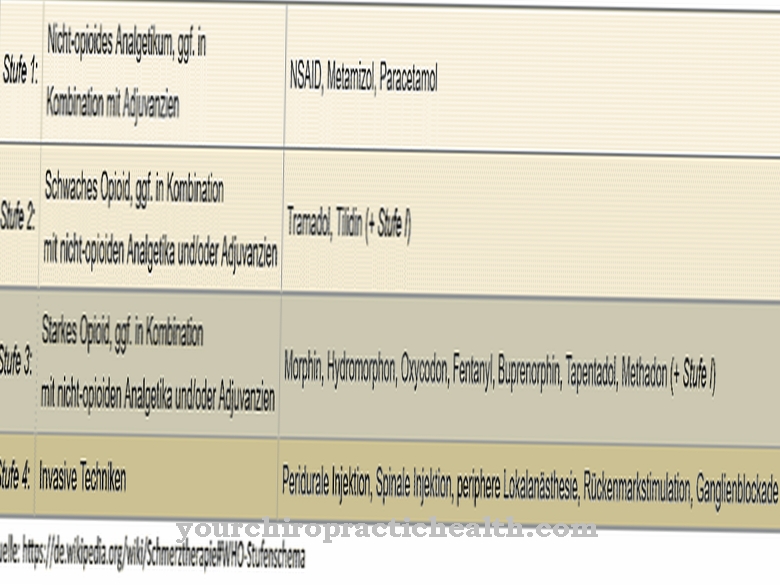Alendronic acid is used to treat osteoporosis. The prescription drug is commercially available in tablet or oral solution. Alendronic acid is also under the name Alendronate known.
What is alendronic acid?

Alendronic acid is a medicinal substance from the bisphosphonate group. The substance is usually in the form of sodium alendronate in salt form. The drug is mainly sold as Alendronic Acid AL 10 mg and 70 mg tablets. There is also an oral solution with 70 ml of alendronic acid in 100 ml. The strength and dosage form are determined by the attending physician.
The doctor treats postmenopausal osteoporosis in women and osteoporosis in men with the active ingredient alendronic acid. The preparation increases bone density. Therapy with this lowers the risk of hip and vertebral fractures.
Pharmacological effect
The effect of alendronic acid is based on its structural similarity to pyrophosphate. Like this, alendronic acid is also quickly integrated into the bone substance. There it accumulates preferentially in the osteoclasts, whose main task is to resorb bone substance.
This process, also known as osteolysis, gradually dissolves the bone tissue. Basically, this process fulfills an important task in constant bone remodeling. In excess, however, osteolysis leads to bone breakdown. Alendronic acid inhibits such an event. The active ingredient smuggles toxic ATP analogues into the osteoclasts. ATP is adenosine triphosphoric acid. The ATP analogs inhibit the farnesyl pyrophosphate synthase which takes place in the osteoclasts.
This means that the osteoclasts lose their biological function. Alendronic acid not only has an inhibitory effect on the function of the osteoclasts, but also has a positive effect on the osteoblasts. This cell type in turn is responsible for the formation of new bone. Osteoclasts and osteoblasts are natural opponents in bone building and maintenance. Alendronic acid balances both.
The body can absorb around 50% of alendronic acid and build it into the bones. The second half leaves the organism almost unchanged via the kidneys after a good 6 hours.
Medical application & use
Initially, osteoporosis often does not cause any symptoms. It gradually thins and weakens the bone structure. If left untreated, osteoporosis poses a high risk of fractures, even from ordinary everyday activities such as household chores or lifting heavy objects. Typical break points in bones weakened by osteoporosis are the hip, spine and wrist. Restricted mobility and the so-called "widow's hump" are further consequences of untreated osteoporosis.
Therapy with alendronic acid effectively prevents and improves impairments that have already occurred. Supportive adjustments to personal lifestyle are helpful. Doctors recommend exercise, dietary corrections, or quitting smoking.
Patients should strictly adhere to the dosage and mode of intake of alendronic acid prescribed by their doctor, as this has been specially designed for them. Because of the high acid content of the drug, timely intake and rules of conduct must be observed. For example, an accidental double ingestion or reflux from the stomach back into the esophagus can put increased stress on it. A sitting, standing, or walking position should be maintained for at least 30 minutes after taking alendronic acid. In the event of errors in taking or frequent symptoms such as heartburn or the like, the attending physician should be consulted.
Children and adolescents as well as pregnant and breastfeeding women should not take alendronic acid. The preparation contains lactose. People with a lactose intolerance have to clarify in a medical consultation whether the drug is even suitable for them, depending on the severity.
Risks & side effects
Since half of the alendronic acid is excreted through the kidneys, it is contraindicated in chronic kidney failure and acute infections of the digestive tract. The drug is also taboo for diseases of the upper gastrointestinal tract. Children, adolescents, pregnant and breastfeeding women are also exempt from treatment with alendronic acid.
Like other bisphosphonates, alendronic acid can irritate the mucous membranes of the upper gastrointestinal tract. Problems such as inflammation, ulcers, erosions and rarely even strictures or perforations can arise in the esophagus in particular. Heartburn is another phenomenon. In the gastrointestinal area, inflammation of the stomach lining or duodenitis can develop. Pay close attention to the various symptoms that occur in connection with this.



























